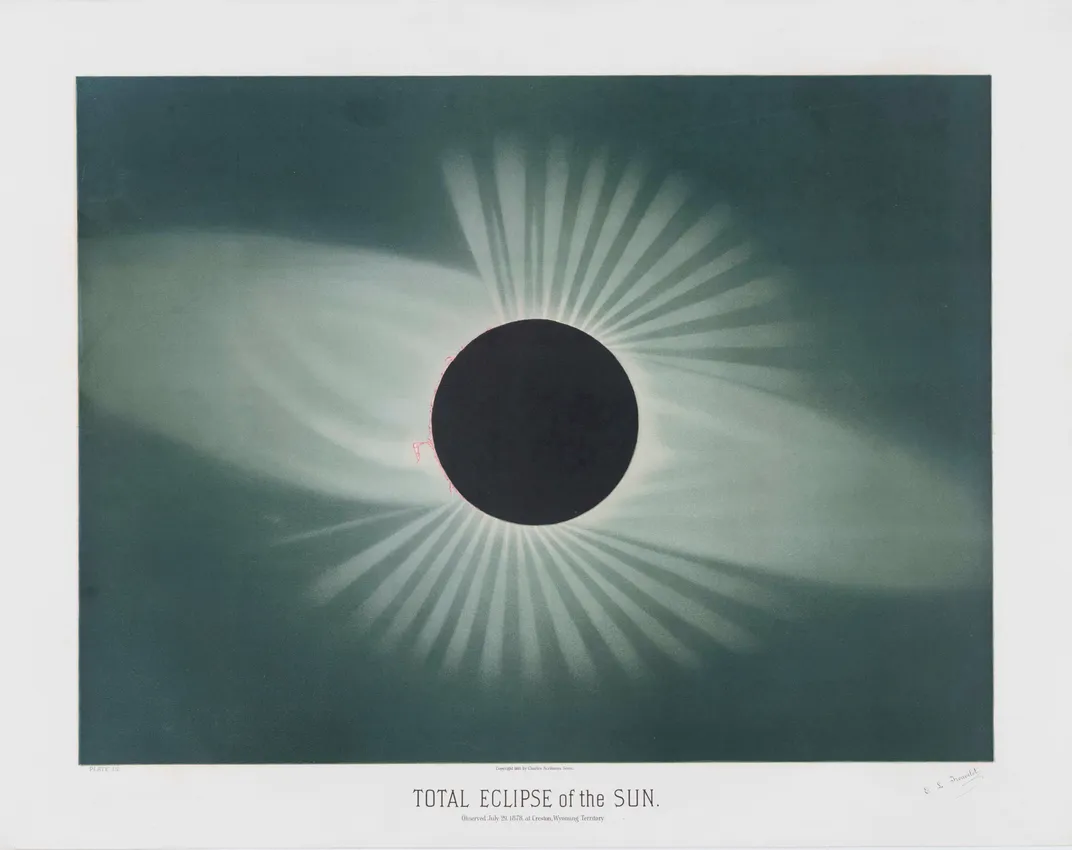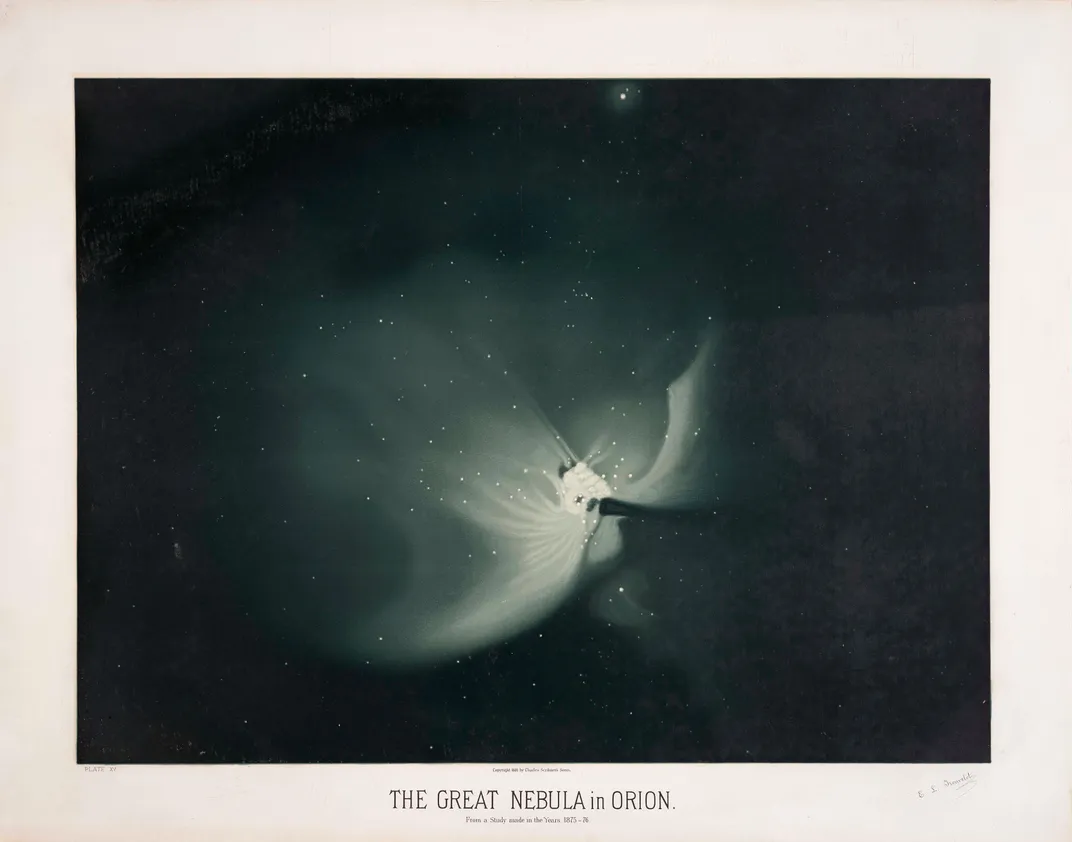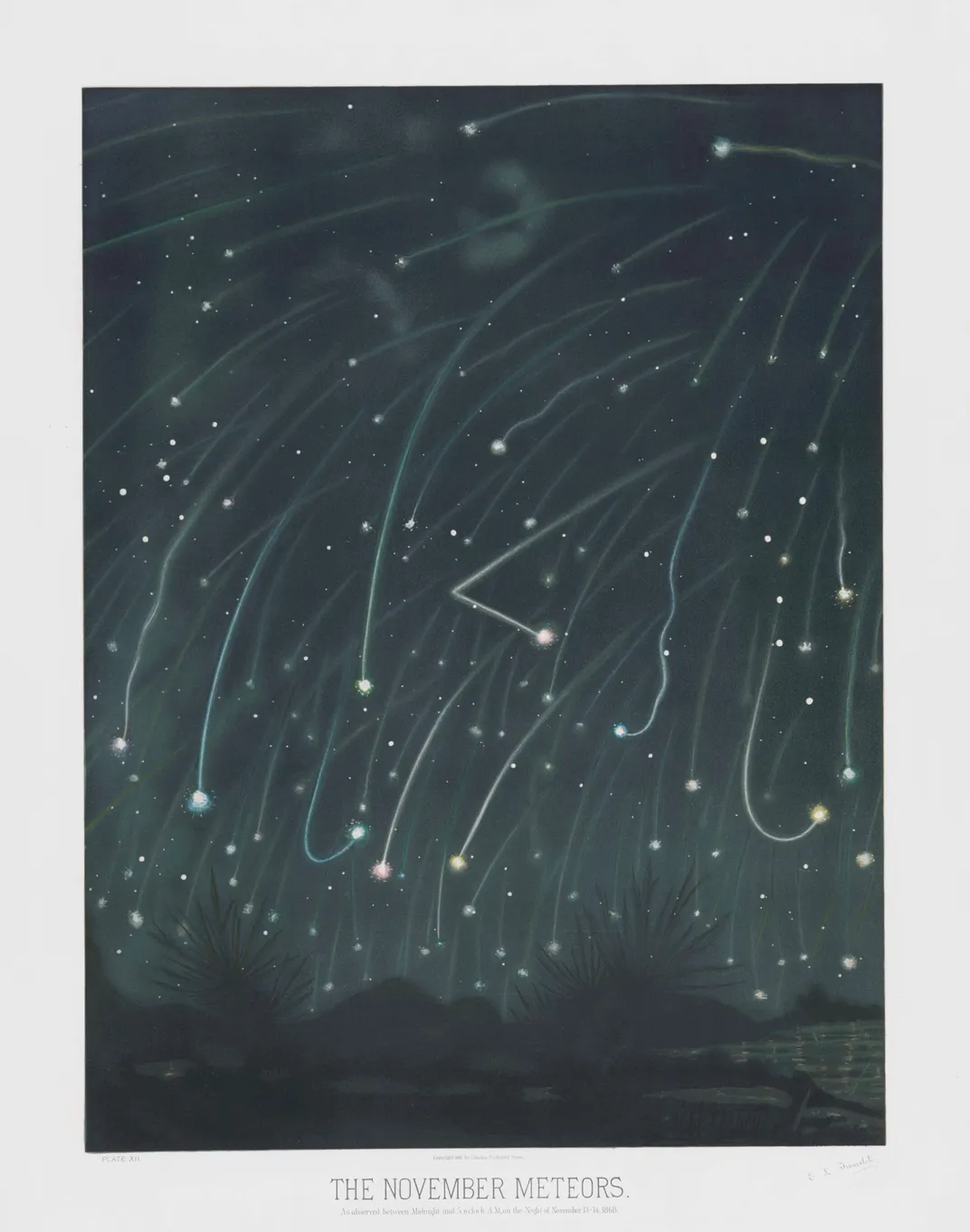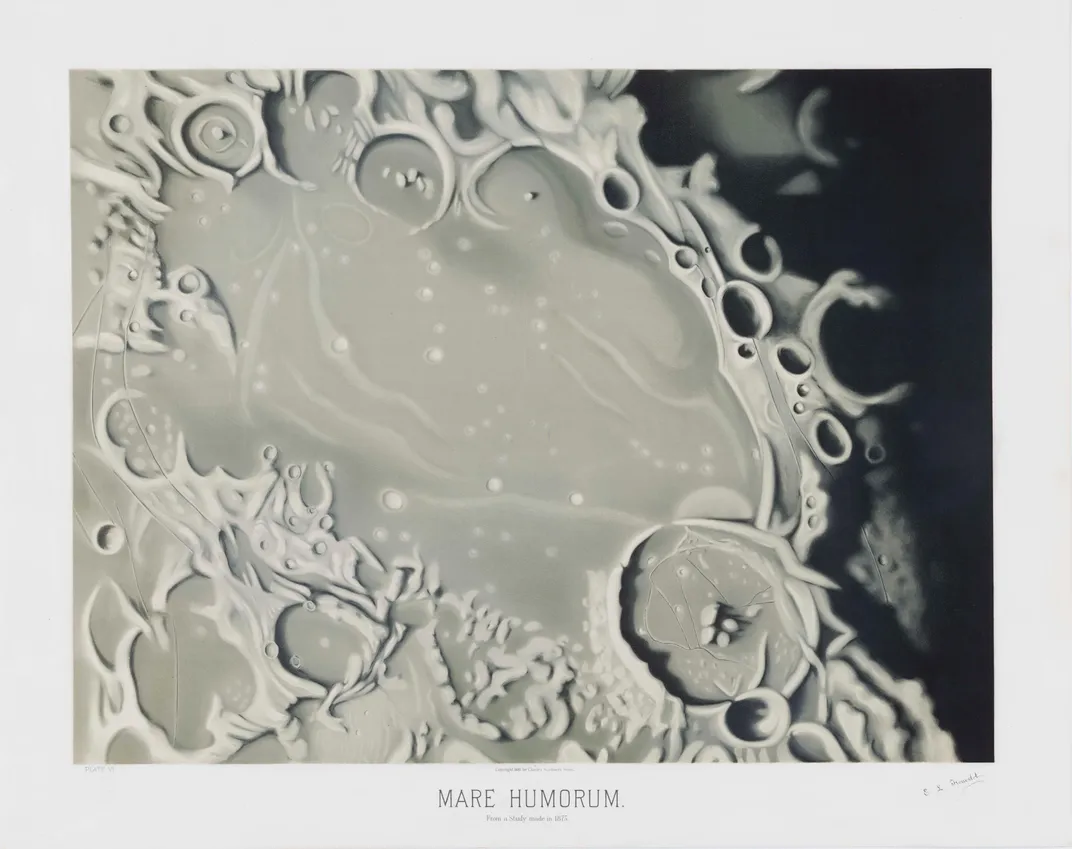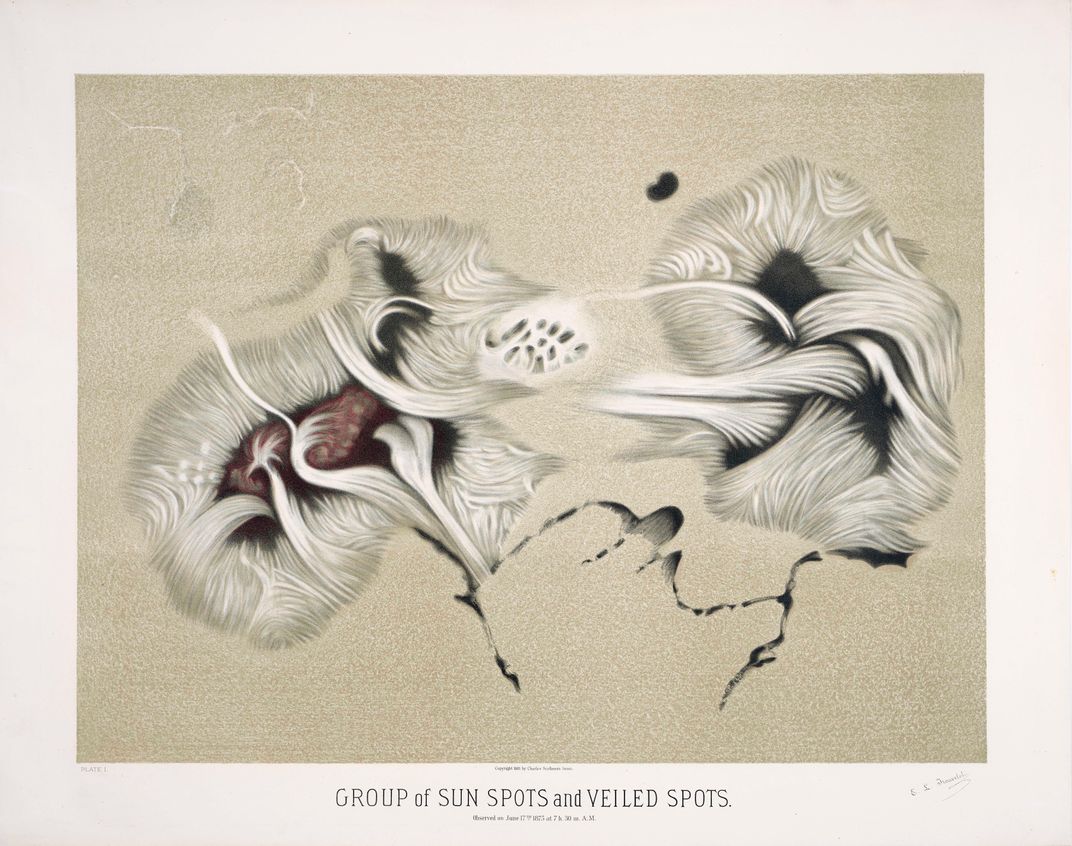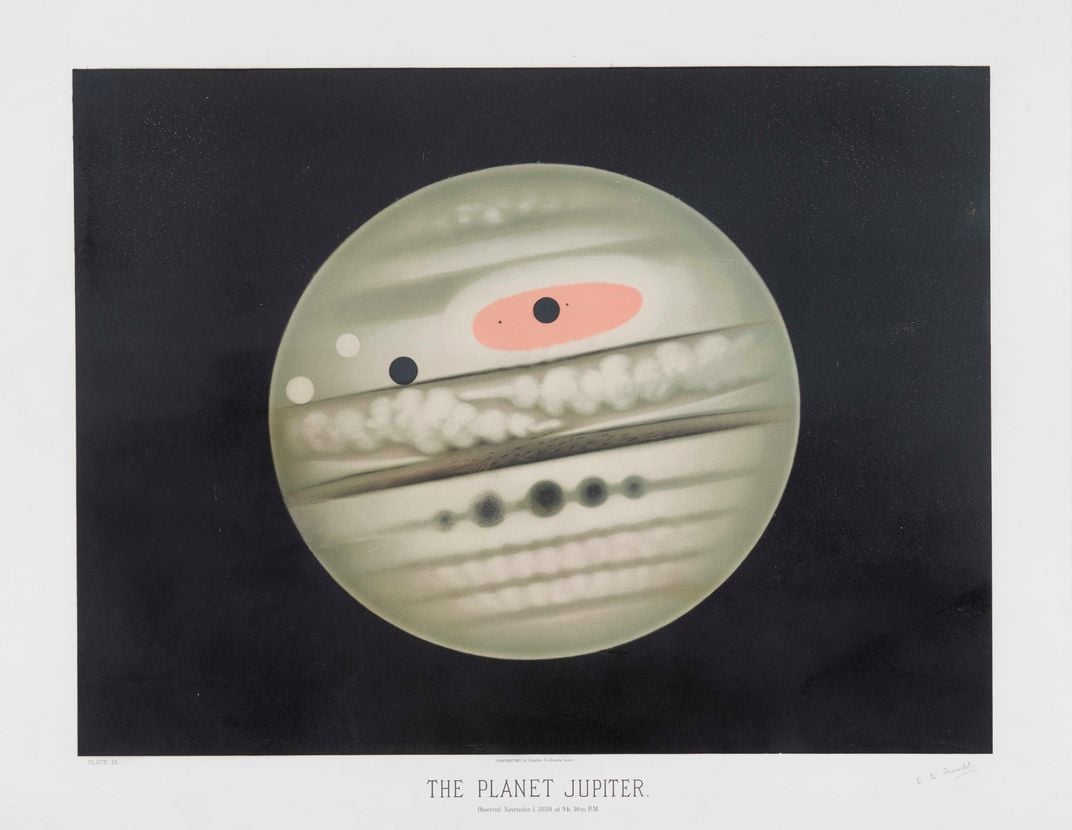A New Exhibition of Rarely Seen Astronomical Lithographs
E.L. Trouvelot’s 150-year-old images are going on display in California this April
“Indescribably stunning” is how curator Krystle Satrum describes the lithographs created by 19th century astronomer and artist Étienne Léopold Trouvelot. She adds: “Getting to see all 15 together at once is a rare treat.” That’s something that visitors to the Huntington Library in San Marino, California, will get to do from April 28 to July 30 when it hangs the exhibition Radiant Beauty: E. L. Trouvelot’s Astronomical Drawings.
Trouvelot (1827–1895) made thousands of astronomical illustrations, most while at the Harvard College Observatory and the U.S. Naval Observatory. After his pastel drawings were a hit at the 1876 Centennial Exposition in Philadelphia, he created a series of chromolithographs in 1882.
“Trouvelot was very meticulous about the accuracy of his images,” says Satrum. “He went to great effort to ensure colors, shapes, shadows, and location of objects were depicted exactly as he saw looking through a telescope. Still, it’s not always a perfect representation, with a few errors arising in the process of converting his original drawings to lithographs.” For example, in the image of Jupiter in the gallery above, Satrum says: “The two moons, the white orbs in Jupiter’s left side, and their shadows, the larger black orbs toward the center of the planet, are shown double their actual size. This error happened while enlarging Trouvelot’s original drawing to the dimensions of the plates.”
You can enjoy a selection from the exhibit above, but if you’re near southern Californa and get a chance to see them at the Library, the curator says, “I think there is something very special about seeing original materials that is hard to describe. In a way, it’s like last year’s total eclipse. Many of us who weren’t in the path of totality watched it on video, and it was remarkable, but still not the same as seeing it in person.”
